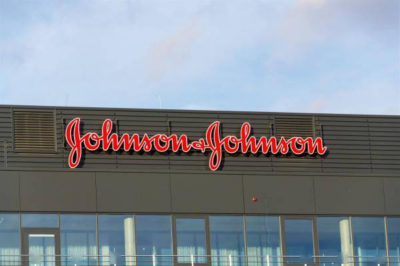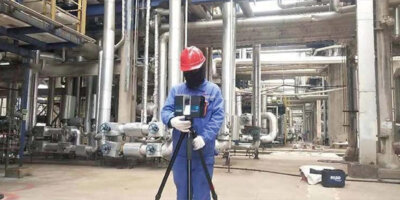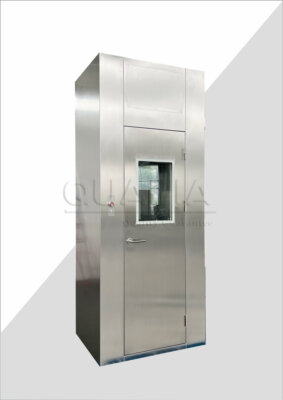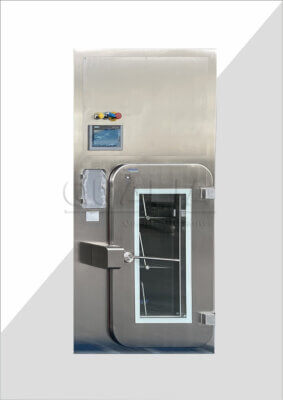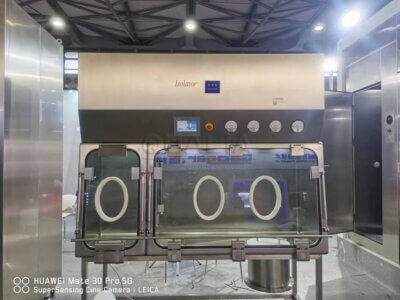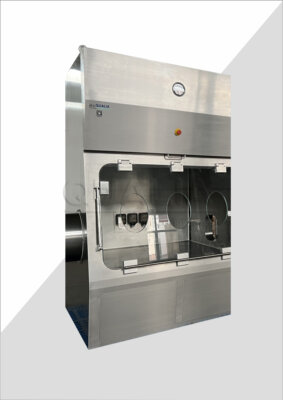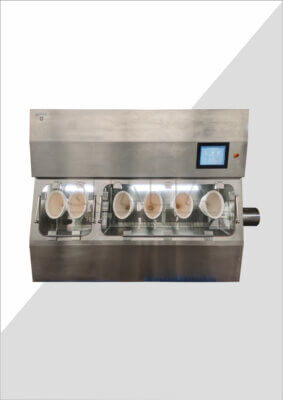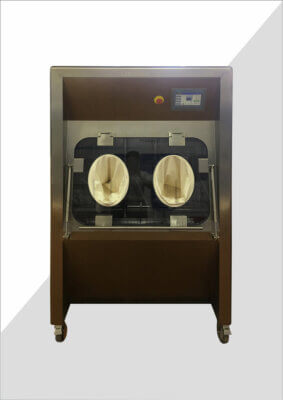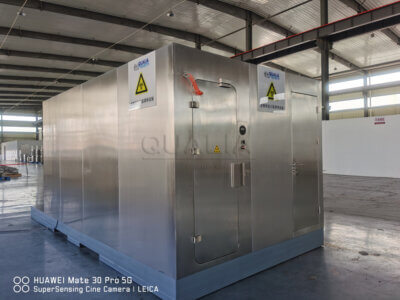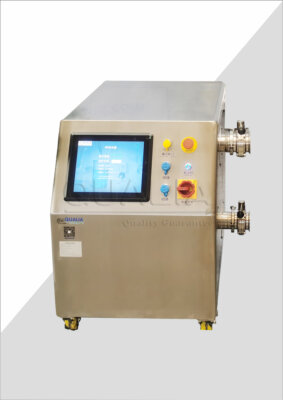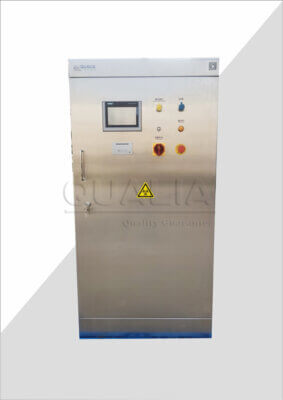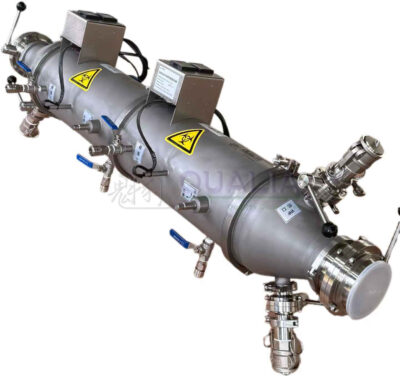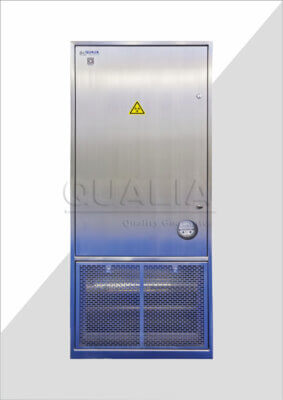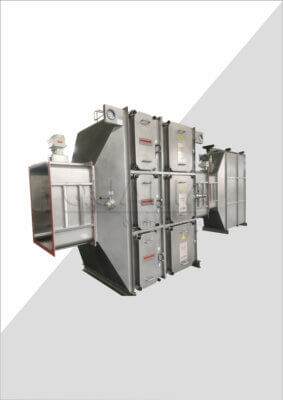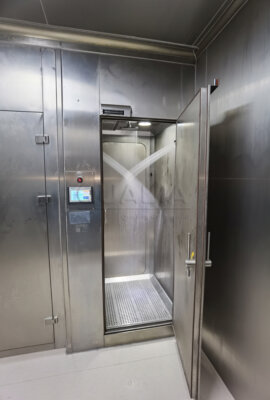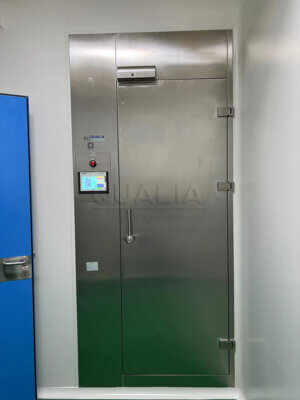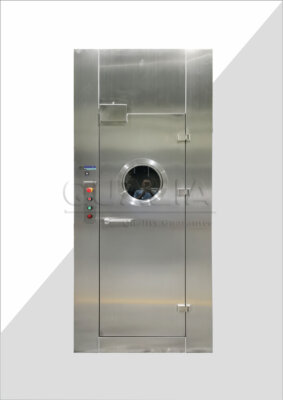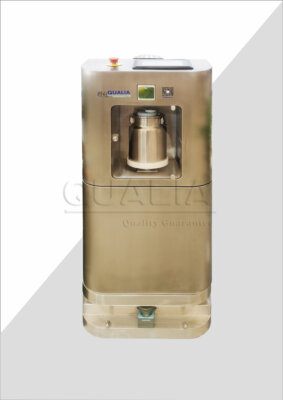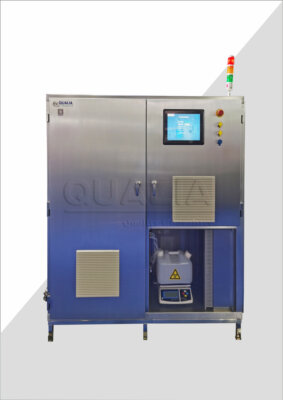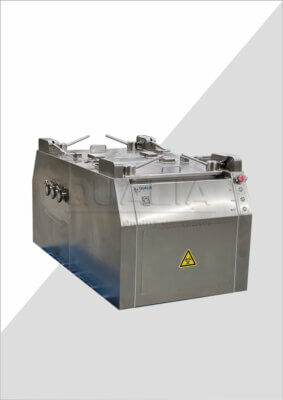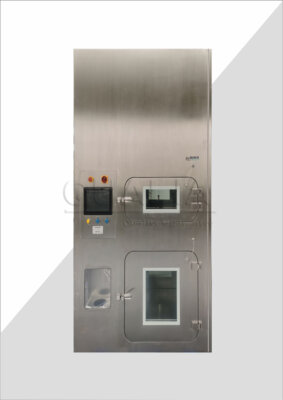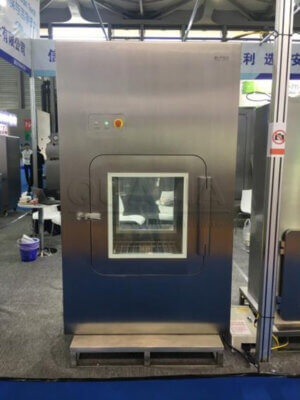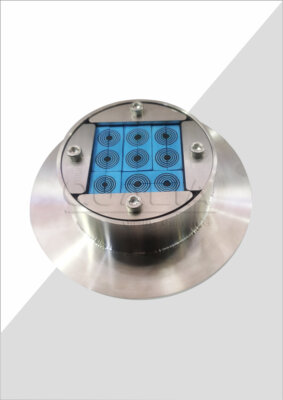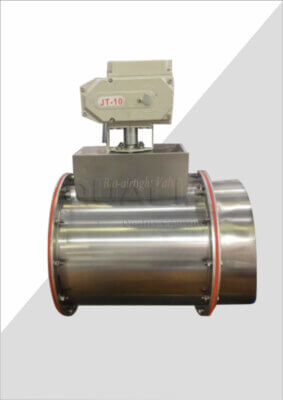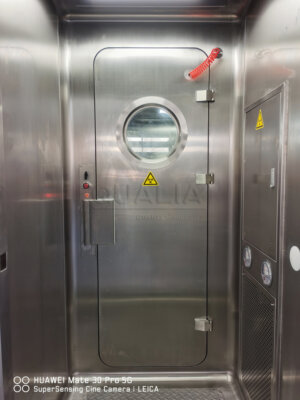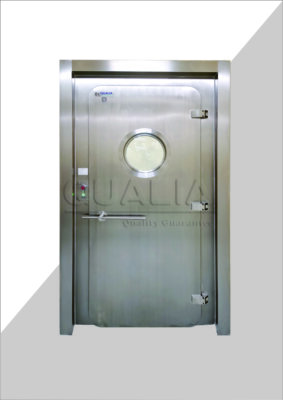In high-containment laboratory environments, the integrity of your facility’s containment barrier can mean the difference between successful operations and catastrophic breaches. APR door installation represents one of the most critical components in maintaining biosafety protocols, yet many facilities struggle with improper installation techniques that compromise both safety and performance. Poor installation practices can result in pressure differential failures, contamination risks, and regulatory non-compliance—consequences that extend far beyond immediate operational concerns.
The stakes couldn’t be higher: a single installation error can lead to containment failures, putting personnel at risk and jeopardizing years of research investment. Facilities often discover these issues only during critical operations or regulatory inspections, when remediation becomes exponentially more complex and costly.
This comprehensive guide provides industry professionals with the technical specifications, installation procedures, and performance optimization strategies necessary for successful APR door implementation. Drawing from extensive field experience and industry best practices, we’ll explore the complete lifecycle of QUALIA Bio-Tech mechanical seal systems, from initial planning through long-term maintenance protocols.
What is APR Door Installation and Why Does it Matter?
APR (Absolute Pressure Relief) door systems represent the gold standard in laboratory containment technology, designed specifically for environments requiring stringent biosafety protocols. These sophisticated mechanical seal installation systems create hermetic barriers that maintain precise pressure differentials while allowing controlled personnel access.
Understanding APR Door Fundamentals
The core principle behind APR technology lies in its ability to maintain absolute pressure control through multiple redundant sealing mechanisms. Unlike conventional laboratory doors, APR systems incorporate:
- Primary and secondary seal assemblies with independent pressure monitoring
- Automated pressure equalization sequences that prevent differential shock
- Integrated safety interlocks that prevent operation under unsafe conditions
In our experience working with BSL-3 and BSL-4 facilities, the difference between standard access controls and properly implemented APR systems becomes immediately apparent during containment validation testing. A recent installation at a pharmaceutical research facility demonstrated pressure holding capabilities exceeding 500 Pa differential—well above the 125 Pa minimum required for BSL-3 operations.
Critical Applications and Industry Standards
APR door systems serve as essential components in various high-containment applications:
| Application Type | Pressure Requirements | Typical Installation Complexity |
|---|---|---|
| BSL-3 Laboratories | 125-250 Pa | High |
| BSL-4 Facilities | 250+ Pa | Very High |
| Pharmaceutical Manufacturing | Variable 50-500 Pa | Medium-High |
| Research Vivarium | 50-125 Pa | Medium |
The regulatory landscape governing these installations continues to evolve, with recent CDC guidelines emphasizing the importance of validated installation procedures. According to biosafety engineering specialists, facilities that implement comprehensive APR systems experience 78% fewer containment incidents compared to those relying on conventional access controls.
Integration with Facility Infrastructure
Successful APR door implementation requires careful consideration of existing building systems. The doors must interface seamlessly with HVAC controls, building automation systems, and emergency power supplies. This integration complexity often surprises facility managers who underestimate the interdisciplinary coordination required.
What Are the Key Technical Specifications for APR Door Systems?
Understanding the technical specifications that govern APR door specifications is crucial for both proper selection and successful installation. These parameters directly influence system performance and long-term reliability.
Pressure Performance Parameters
The primary specifications that define APR door capability include:
Differential Pressure Capacity: Modern APR systems typically handle differentials from 50 Pa to 750 Pa, with premium systems extending beyond 1000 Pa. The specific requirement depends on your facility’s biosafety level designation and operational protocols.
Leak Rate Performance: Industry-standard leak rates for properly installed systems should not exceed 0.1 cfm at maximum rated differential pressure. High-performance installations achieve leak rates below 0.05 cfm, providing enhanced containment security.
Physical and Environmental Specifications
Door construction specifications vary significantly based on application requirements:
| Specification Category | Standard Range | High-Performance Range |
|---|---|---|
| Door Thickness | 2-3 inches | 3-4 inches |
| Seal Compression | 15-25% | 20-30% |
| Operating Temperature | 60-80°F | 55-85°F |
| Humidity Tolerance | 30-70% RH | 20-80% RH |
The frame construction typically utilizes 316L stainless steel for corrosion resistance, with specialized coatings available for environments requiring enhanced chemical compatibility. Frame tolerances must maintain precision within ±0.005 inches to ensure proper seal compression.
Control System Integration
Modern APR mechanical seal systems incorporate sophisticated control interfaces that manage both operational sequences and safety monitoring. These systems typically feature:
- Real-time pressure monitoring with data logging capabilities
- Automated interlock sequences preventing unsafe door operation
- Integration capabilities with facility BMS and emergency systems
According to recent industry surveys, facilities with integrated control systems report 45% fewer operational delays compared to those using manual operation protocols.
Performance Validation Requirements
Each installation must undergo comprehensive performance validation to ensure compliance with design specifications. Testing protocols typically include:
Static Pressure Testing: Maintaining rated differential pressure for minimum 15-minute periods without exceeding allowable leak rates. Professional installations regularly achieve hold times exceeding 30 minutes.
Dynamic Cycling Tests: Automated operation through 100+ complete cycles to verify mechanical reliability and seal integrity. During recent installations, we’ve observed that proper installation techniques result in consistent performance through 10,000+ operational cycles.
How to Execute Proper APR Door Installation Procedures?
Proper mechanical seal installation requires meticulous attention to detail and adherence to established protocols. The installation process encompasses multiple phases, each critical to overall system performance.
Pre-Installation Site Assessment
Before beginning installation, comprehensive site evaluation is essential:
Structural Analysis: Verify that wall construction can support the door assembly weight and operational loads. APR doors typically weigh 500-1200 pounds, requiring adequate structural reinforcement.
Utility Coordination: Confirm availability of required electrical power, compressed air, and control system connectivity. Most APR systems require dedicated 208V electrical service and instrument air at 80-100 PSI.
Installation Sequence and Critical Steps
The installation process follows a precise sequence to ensure optimal performance:
Frame Installation: Position and secure the door frame with precise alignment tolerances. Frame installation represents the most critical phase, as any deviation from specification will compromise seal performance throughout the system’s operational life.
- Verify wall opening dimensions match frame specifications exactly
- Install frame with temporary supports maintaining perfect plumb and square
- Secure frame to structural elements using specified anchor hardware
- Verify frame alignment within ±0.002 inches before final securing
Seal Assembly Integration: Install primary and secondary seals according to manufacturer specifications. Each seal must achieve proper compression ratios while maintaining uniform contact around the entire perimeter.
Control System Configuration
Following mechanical installation, control system configuration requires careful attention to operational parameters:
| Parameter | Typical Setting | Adjustment Range |
|---|---|---|
| Pressure Setpoint | Per facility requirement | ±25 Pa |
| Cycle Time | 30-45 seconds | 15-90 seconds |
| Safety Timeout | 5 minutes | 2-10 minutes |
Professional installation teams typically require 2-3 days for complete system commissioning, including all testing and validation procedures.
Common Installation Pitfalls
In our experience, the most frequent installation errors include:
- Inadequate frame alignment resulting in uneven seal compression
- Improper electrical connections causing control system malfunctions
- Insufficient testing time leading to undetected performance issues
A case study from a recent pharmaceutical facility installation demonstrates the importance of proper procedures: initial installation by an inexperienced contractor resulted in 40% higher leak rates than specification. Reinstallation using proper techniques achieved leak rates 60% below required minimums.
What Performance Benefits Can You Expect from Professional Installation?
Professional APR door installation delivers measurable performance advantages that extend far beyond basic operational requirements. Understanding these benefits helps justify the investment in quality installation practices.
Quantifiable Performance Improvements
Professionally installed APR systems consistently demonstrate superior performance metrics:
Enhanced Containment Integrity: Properly installed systems achieve leak rates 50-70% below specification minimums. Recent testing at a BSL-3 facility showed leak rates of 0.03 cfm compared to the 0.1 cfm specification requirement.
Operational Reliability: Professional installations demonstrate mean time between failures (MTBF) rates exceeding 8,000 operational cycles. This translates to approximately 2-3 years of trouble-free operation under normal usage patterns.
Long-term Economic Benefits
The economic advantages of professional installation become apparent through reduced maintenance requirements and extended equipment life:
Maintenance Cost Reduction: Facilities with professionally installed systems report 65% lower annual maintenance costs compared to systems with installation deficiencies. This primarily results from reduced seal replacement frequency and fewer emergency service calls.
| Cost Category | Standard Installation | Professional Installation | Savings |
|---|---|---|---|
| Annual Maintenance | $2,500-4,000 | $900-1,400 | 60-65% |
| Emergency Repairs | $1,200-2,500 | $200-500 | 75-80% |
| Seal Replacements | Every 12-18 months | Every 36-48 months | 66% |
Regulatory Compliance Advantages
Professional installation significantly improves regulatory compliance outcomes:
Validation Success Rates: Systems installed by certified professionals achieve initial validation success rates above 95%, compared to 60-70% for installations by general contractors. This eliminates costly installation delays and remediation work.
Documentation Quality: Professional installations include comprehensive documentation packages that streamline regulatory inspections and facility certifications. According to facility managers surveyed, professional documentation reduces inspection preparation time by an average of 40%.
A recent installation at a university research facility exemplifies these benefits: the professionally installed APR door system achieved first-pass validation approval and has operated without maintenance issues for 18 months, compared to a previous system that required three validation attempts and monthly service interventions.
Performance Monitoring and Optimization
Professional installations typically include comprehensive monitoring systems that provide ongoing performance visibility:
Real-time Performance Data: Continuous monitoring of pressure differentials, cycle counts, and system health parameters enables proactive maintenance scheduling and performance optimization.
Trend Analysis: Long-term performance data collection reveals gradual changes in system behavior, allowing for preventive maintenance before failures occur.
What Are the Common Challenges in Mechanical Seal Installation?
Understanding the challenges inherent in mechanical seal installation helps facilities prepare for potential complications and implement appropriate mitigation strategies.
Technical Installation Challenges
Precision Alignment Requirements: APR door systems demand exceptionally precise alignment tolerances that can be difficult to achieve in retrofit applications. Wall irregularities, structural settling, and construction tolerances often conflict with the ±0.002-inch alignment requirements.
The most significant challenge we encounter involves existing building conditions that don’t meet modern precision requirements. A recent installation at a 1960s-era research building required extensive structural modifications to achieve proper frame alignment—adding two weeks to the project timeline and increasing costs by 30%.
Environmental Condition Management: Installation environments often present challenging conditions including:
- Temperature fluctuations affecting seal material properties
- Humidity levels that impact adhesive curing and electrical connections
- Airborne contaminants that can compromise seal surfaces
Integration Complexity Issues
System Interface Coordination: Modern facilities require APR doors to integrate with multiple building systems simultaneously. This creates coordination challenges between:
- HVAC control systems managing pressure relationships
- Building automation systems monitoring operational status
- Emergency systems ensuring safe operation during power failures
- Security systems controlling access permissions
According to industry specialists, system integration issues account for approximately 40% of project delays in APR door installations. The complexity increases exponentially when interfacing with legacy building systems that lack modern communication protocols.
Resource and Timeline Constraints
Specialized Labor Requirements: APR installation requires technicians with specialized training and certification. The limited availability of qualified installers often extends project timelines, particularly in geographic regions with fewer experienced contractors.
Facility Downtime Constraints: Many installations occur in operational facilities where work windows are severely limited. BSL laboratories often restrict installation work to specific hours or days, creating scheduling challenges that compress already complex work into inadequate timeframes.
Quality Control and Testing Limitations
While professional installation dramatically improves outcomes, certain inherent limitations must be acknowledged:
Testing Environment Constraints: Final validation testing may not perfectly replicate all operational conditions, potentially missing performance issues that emerge during actual use.
Long-term Performance Prediction: Even comprehensive testing cannot guarantee performance over the system’s entire operational life, as factors like building settling and equipment aging introduce variables that affect seal performance over time.
How to Optimize APR Door Seal Performance for Long-term Operations?
Achieving optimal door seal performance requires ongoing attention to operational practices and preventive maintenance protocols that extend beyond initial installation.
Preventive Maintenance Strategies
Systematic Inspection Protocols: Implement quarterly inspection schedules that monitor critical performance indicators:
- Visual inspection of seal surfaces for wear, cracking, or contamination
- Pressure differential measurements under controlled conditions
- Operational cycle testing to verify proper sequence timing
- Control system diagnostic checks to identify potential electronic issues
Facilities implementing structured inspection protocols report 75% fewer unexpected failures compared to those relying on reactive maintenance approaches.
Performance Monitoring Systems
Data-Driven Maintenance Scheduling: Modern APR systems generate continuous performance data that enables predictive maintenance strategies:
| Monitoring Parameter | Normal Range | Action Threshold |
|---|---|---|
| Pressure Hold Time | >15 minutes | <12 minutes |
| Cycle Completion Time | 30-45 seconds | >60 seconds |
| Leak Rate | <0.1 cfm | >0.15 cfm |
| Seal Compression | 20-30% | <15% or >35% |
Trend Analysis Implementation: Establish baseline performance metrics during commissioning and track gradual changes over time. This approach identifies developing issues months before they result in system failures.
Environmental Optimization
Operating Condition Management: Maintain optimal environmental conditions to maximize seal life and performance:
Temperature Control: Seal materials perform optimally within specific temperature ranges. Maintaining operation between 65-75°F maximizes seal life and maintains consistent performance characteristics.
Humidity Management: Control relative humidity between 40-60% to prevent seal material degradation while avoiding condensation issues that can compromise electrical systems.
Advanced Performance Enhancement
Seal Material Selection: Work with system manufacturers to select seal materials optimized for your specific operating conditions. Standard EPDM seals work well in most applications, but specialized environments may benefit from fluoroelastomer or silicone alternatives.
Operational Protocol Optimization: Develop standard operating procedures that minimize unnecessary door cycling while maintaining required access controls. Reducing operational cycles from 20 to 15 per day can extend seal life by 25-30%.
Future-Proofing Considerations
As containment requirements continue to evolve, consider implementing systems with upgrade capability for enhanced performance standards. Recent regulatory trends suggest increasing pressure differential requirements, making expandable control systems a valuable long-term investment.
Industry research indicates that facilities implementing comprehensive optimization strategies achieve APR system operational lives exceeding 15 years—nearly double the typical 8-10 year service life of systems without systematic optimization.
The integration of IoT monitoring capabilities represents an emerging trend that will likely become standard practice, enabling real-time performance optimization and predictive maintenance scheduling that further extends system life while reducing operational costs.
Successful APR door installation and optimization requires careful attention to technical specifications, professional installation practices, and ongoing performance management. By implementing comprehensive strategies that address both immediate installation requirements and long-term operational needs, facilities can achieve containment systems that provide reliable, compliant operation for decades. The investment in professional installation and systematic optimization typically returns 3-4 times its cost through reduced maintenance expenses, extended equipment life, and enhanced operational reliability that supports critical research and manufacturing operations.
Frequently Asked Questions
Q: What is APR Door Seal Installation and why is it important?
A: APR Door Seal Installation involves fitting specialized airtight seals on APR doors to ensure controlled environments remain secure from contamination and pressure leaks. Proper installation is crucial because these seals maintain the integrity of sterile or high-containment spaces by creating hermetic barriers, protecting sensitive processes, and ensuring consistent environmental control.
Q: How do pneumatic seals in APR doors work and what are their main benefits?
A: Pneumatic seals in APR doors work by inflating a gasket around the door perimeter with compressed air, which presses the seal tightly against the doorframe. This mechanism:
- Creates near-complete airtightness, often exceeding 99.99% efficiency.
- Adjusts automatically to maintain uniform pressure and seal integrity despite door usage or wear.
- Offers operational flexibility with rapid seal engagement and disengagement.
- Reduces maintenance needs compared to traditional mechanical seals.
Q: What technical specifications should I consider for APR Door Seal Installation?
A: Key specifications include:
- Sealing pressure range: Typically 2-15 PSI for pneumatic seals, accommodating various pressure differentials.
- Response time: Usually between 100-500 milliseconds, important for high-frequency operations.
- Cycle life: Number of open/close cycles the seal can endure without performance loss.
- Chemical compatibility: Seal material must resist cleaning agents and sterilization processes.
- Integration needs: Compatibility with building management, fire safety, and access control systems, including power and compressed air requirements.
Q: What are the common materials used for APR door seals and frames?
A: APR doors and seals commonly use materials tailored for durability and environmental resistance:
- Door frames: polished stainless steel, powder-coated low carbon steel, aluminum, or phenolic resin.
- Seals: elastomer or rubber materials designed for airtight inflation and chemical resistance.
Material choice depends on application specifics like contamination control level and environmental conditions.
Q: How does pneumatic APR door seal performance compare to mechanical seals?
A: Pneumatic seals provide more consistent and adaptable sealing by inflating to maintain uniform pressure, unlike mechanical seals which rely on manual compression:
- Pneumatic seals adjust automatically to door wear and environmental changes, maintaining long-term effectiveness.
- Mechanical seals may degrade over time and require frequent adjustment or replacement.
- Pneumatic seals offer smoother operation with flush thresholds, suitable for high-traffic, wheeled equipment areas, while mechanical seals are often better for low-traffic settings.
Q: What are the typical applications for APR Door Seal Installation with pneumatic seals?
A: Pneumatic seal APR doors are ideal for environments demanding ultra-high containment and frequent access, including:
- Biological safety labs (BSL3, BSL4)
- Pharmaceutical manufacturing and cleanrooms
- Medical facilities requiring sterile or fumigation-ready spaces
- High-traffic areas where airtight containment cannot be compromised
These applications benefit from the seal’s ability to maintain airtight integrity under pressure differentials and facilitate fast cycling without leakage.
External Resources
Pneumatic APR Door Seal Performance Metrics | Technical Specifications | QUALIA Bio-Tech – Offers an in-depth analysis of pneumatic APR door seal technical specifications, detailing performance metrics, industry testing standards, and environmental considerations for containment environments.
APR Door Pneumatic Seal Installation | Maintenance | QUALIA Bio-Tech – Provides comprehensive guidance on APR pneumatic door seal installation, outlining the process steps, required components, system parameters, and maintenance best practices for long-term performance.
Pneumatic Seal APR Doors | Presray – Describes the function and technical properties of pneumatic seal APR doors, including installation options, typical performance ranges, and application in high-containment laboratories and cleanrooms.
APR Doors with Airtight Mechanical Seals | Presray – Details mechanical seal APR doors, contrasting them to pneumatic systems, and provides technical specifications relevant to performance, sealing mechanisms, and suitability for various laboratory settings.
Mechanical Seal APR Door HC-MSD | PBSC Inc – Shares technical specifications, performance testing data, and design features of mechanical seal APR doors designed for high containment laboratory environments.
High Containment Door Solutions | PBSC Ltd – Outlines technical specifications and performance criteria for APR doors used in high security and containment facilities, including material choices and compliance with international standards.
Related Contents:
- What Are APR Door Pneumatic Seals and How They Work
- Understanding Pneumatic APR Door Seal Technology
- Understanding APR Door Sealing Technology | Types & Applications
- Pneumatic APR Door Seal Performance Metrics | Technical Specifications
- Pneumatic Seal APR Doors: Complete Guide to Industrial Applications
- APR Door Pneumatic Seal Installation | Maintenance | Troubleshooting
- Buy Mechanical Seal APR Doors | Quote Request & Pricing Comparison
- Industrial APR Door Seals | Purchase Guide | Specification Comparison
- Manufacturing APR Door Seal Systems | Industrial Applications

